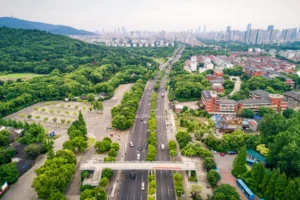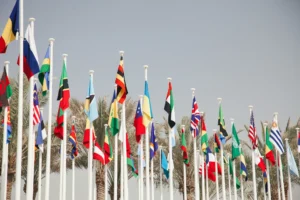As a development scholar deeply immersed in the nuances of Kenya’s progress, I find myself standing at a pivotal moment, looking at the nation’s trajectory towards universal water and sanitation access. We are just five years away from the ambitious targets of both the Sustainable Development Goals (SDG 6) and our own national aspiration, Vision 2030. This isn’t merely a ticking clock; it’s a critical “crossroads,” a moment to scrutinize our achievements, confront our obstacles and galvanize collective action.
Access to clean water and dignified sanitation isn’t just about infrastructure; it’s a fundamental human right. It’s the bedrock of public health, a catalyst for economic growth and an essential component of gender equality. Without it, the full potential of individuals and communities remains tragically untapped.
Milestones on the Journey: A Decade of Dedicated Effort
Kenya has demonstrated remarkable commitment over the past decade, significantly expanding its water and sanitation footprint. We’ve witnessed a period of deliberate policy-making and strategic investment:
- Infrastructure Renaissance: From new dams and boreholes to expanded pipeline networks, our water supply coverage has seen substantial growth. Entities like the National Water Harvesting and Storage Authority have been crucial in enhancing water security, particularly in our arid and semi-arid lands (ASALs).
- Devolution as a Game-Changer: The decentralization of water services to county governments, mandated by the 2010 Constitution, has fostered local ownership and accountability. This has enabled more tailored, community-responsive interventions, aligning with diverse local needs and hydrological realities.
- Robust Policy and Regulatory Frameworks: The Water Services Regulatory Board (WASREB) has been instrumental in setting performance standards, while the Water Act 2016 solidified our commitment to integrated water resource management and sustainable service provision.
- Sanitation on the Rise: Beyond water, there’s been an increased focus on sanitation. Initiatives promoting Open Defecation Free (ODF) communities, often through Community-Led Total Sanitation (CLTS) approaches, have driven significant behavioral change in rural areas.
- Leveraging Partnerships: Recognizing the scale of investment required, there’s a growing appetite for Public-Private Partnerships (PPPs) to bring in private sector expertise and capital, especially for complex urban water and wastewater projects.
A Scholar’s Reflection: Bridging the Ideal with the Real
While these milestones are commendable, my personal reflection as a development scholar compels me to look beyond the headlines and acknowledge the persistent disparities that threaten to slow our momentum.
The grand narrative of “universal access” often masks the harsh reality for marginalized communities. Urban informal settlements, for instance, still contend with inadequate water points, exploitative pricing from informal vendors, and rudimentary sanitation facilities that are breeding grounds for disease. In remote rural areas, the daily burden of water collection continues to fall disproportionately on women and girls, entrenching cycles of poverty and limiting their opportunities for education and economic advancement. This spatial inequality and socio-economic stratificationremain critical equity challenges.
Furthermore, while building infrastructure is vital, the long-term sustainable service delivery demands equal attention. Many water service providers grapple with aging infrastructure, high levels of non-revenue water, insufficient operational and maintenance (O&M) funding, and a deficit of skilled personnel. Ensuring the financial viability of these services, especially amidst the unpredictable impacts of climate change – with its erratic rainfall, prolonged droughts and intensified floods necessitates innovative financing and robust climate resilience strategies.
My field observations consistently highlight the urgent need for a more integrated approach to water resource management. The interconnectedness of upstream land use, deforestation, agricultural runoff and downstream water quality cannot be ignored. A fragmented approach risks undermining gains in one area through neglect in another. We must prioritize catchment protection, promote water-use efficiency, and invest significantly in wastewater treatment and reuse to close the loop on water scarcity and enhance overall water security.
The Final Five Years: A Call to Accelerated Action
The next five years are not merely a continuation of past efforts; they are our “crossroads,” a defining period where our collective choices will determine the trajectory of water and sanitation in Kenya. To genuinely realize SDG 6 and Vision 2030, we must adopt a renewed sense of urgency and strategic agility:
- Strengthening Governance and Capacity: Continuous capacity building for county governments and water utilities in areas like financial management, technical expertise and regulatory compliance is paramount. Robust anti-corruption measures are essential to safeguard resources.
- Innovative Financing and Resource Mobilization: Moving beyond traditional public funding, we must aggressively pursue blended finance models, impact investing and performance-based funding. Tariff structures need to be re-evaluated for sustainability while ensuring affordability for the poorest through targeted subsidies.
- Climate Resilience and Adaptation: Climate change is a clear and present danger. Investments must prioritize climate-proof infrastructure, scaled-up rainwater harvesting, groundwater recharge and diversified water sources. Strengthening early warning systems and enhancing community-level adaptive capacities are non-negotiable.
- Leaving No One Behind (LNOB): A deliberate and targeted focus on the unserved and underserved – informal settlements, ASALs, and vulnerable populations is critical. This requires disaggregated data, pro-poor policies and truly inclusive planning that actively engages these communities.
- Leveraging Technology and Innovation: Deploying appropriate technologies for water purification, smart metering, leak detection, and decentralized sanitation can significantly boost efficiency and effectiveness. Digital platforms can further enhance monitoring, accountability, and citizen engagement.
- Sustained Behavioral Change: Sustainable sanitation extends beyond physical infrastructure; it demands consistent behavioral shifts. Continued investment in hygiene education, particularly handwashing with soap and promoting dignified and safe sanitation practices remains a high-impact, cost-effective intervention.
Conclusion: A Shared Responsibility for a Shared Future
Kenya’s pursuit of water and sanitation security is a monumental, collective undertaking. It demands coordinated effort from every stakeholder: government at all levels, civil society, the private sector, development partners and indeed, every citizen.
My reflection as a development scholar underscores that while our nation has achieved significant strides, the “crossroads” compel us to embrace equity, sustainability and innovation with renewed vigor. The vision of a Kenya where every individual has dignified access to safe water and sanitation is not a distant dream; it is an achievable imperative for unlocking human potential and fostering inclusive growth.
Let us seize these next five years with unwavering purpose and collective resolve, ensuring that no one is left behind in this fundamental quest for a healthier, more prosperous Kenya.





